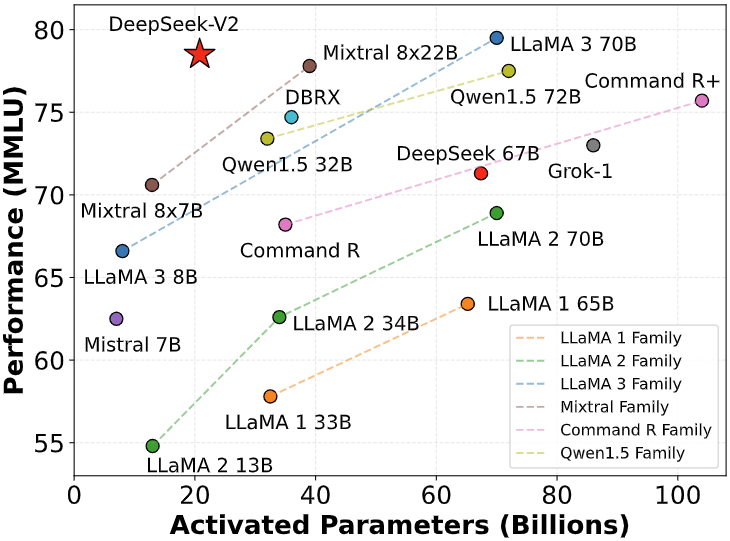It's been a couple of days given that DeepSeek, a Chinese artificial intelligence (AI) business, rocked the world and international markets, sending American tech titans into a tizzy with its claim that it has constructed its chatbot at a small portion of the cost and energy-draining information centres that are so popular in the US. Where business are putting billions into going beyond to the next wave of expert system.

DeepSeek is everywhere right now on social networks and is a burning subject of discussion in every power circle worldwide.

So, what do we understand now?
DeepSeek was a side task of a Chinese quant hedge fund company called High-Flyer. Its expense is not simply 100 times cheaper however 200 times! It is open-sourced in the real significance of the term. Many American companies try to fix this issue horizontally by developing larger data centres. The Chinese firms are innovating vertically, utilizing new mathematical and engineering techniques.
)
DeepSeek has now gone viral and is topping the App Store charts, having beaten out the previously indisputable king-ChatGPT.
So how exactly did DeepSeek manage to do this?
Aside from more affordable training, not doing RLHF (Reinforcement Learning From Human Feedback, a machine knowing method that utilizes human feedback to improve), quantisation, and caching, where is the reduction originating from?
Is this since DeepSeek-R1, a general-purpose AI system, isn't quantised? Is it subsidised? Or is OpenAI/Anthropic simply charging too much? There are a couple of basic architectural points compounded together for big cost savings.
The MoE-Mixture of Experts, a device knowing method where numerous professional networks or learners are used to break up an issue into homogenous parts.
MLA-Multi-Head Latent Attention, probably DeepSeek's most critical innovation, to make LLMs more effective.

FP8-Floating-point-8-bit, an information format that can be used for training and users.atw.hu inference in AI models.
Multi-fibre Termination Push-on connectors.

Caching, a procedure that stores multiple copies of information or forum.altaycoins.com files in a temporary storage location-or cache-so they can be accessed faster.
Cheap electrical energy
Cheaper materials and costs in basic in China.
DeepSeek has actually also pointed out that it had actually priced earlier variations to make a little revenue. Anthropic and OpenAI had the ability to charge a premium considering that they have the best-performing designs. Their customers are also mostly Western markets, which are more wealthy and can pay for to pay more. It is likewise important to not ignore China's objectives. Chinese are known to offer products at very low rates in order to deteriorate competitors. We have actually previously seen them selling products at a loss for 3-5 years in industries such as solar energy and electric vehicles until they have the market to themselves and can race ahead technologically.
However, we can not pay for to discredit the truth that DeepSeek has actually been made at a cheaper rate while using much less electrical power. So, what did DeepSeek do that went so best?
It optimised smarter by proving that extraordinary software can get rid of any hardware restrictions. Its engineers made sure that they focused on low-level code optimisation to make memory usage effective. These enhancements ensured that efficiency was not hindered by chip constraints.
It trained only the essential parts by utilizing a technique called Auxiliary Loss Free Load Balancing, which made sure that just the most relevant parts of the model were active and upgraded. Conventional training of AI designs usually involves upgrading every part, consisting of the parts that don't have much contribution. This results in a substantial waste of resources. This resulted in a 95 per cent decrease in GPU use as compared to other tech giant business such as Meta.
DeepSeek used an innovative method called Low Rank Key Value (KV) Joint Compression to conquer the difficulty of reasoning when it concerns running AI designs, which is extremely memory extensive and exceptionally pricey. The KV cache shops key-value sets that are essential for attention mechanisms, which use up a great deal of memory. DeepSeek has actually found an option to compressing these key-value pairs, using much less memory storage.
And now we circle back to the most essential part, DeepSeek's R1. With R1, DeepSeek generally split among the holy grails of AI, which is getting models to reason step-by-step without relying on mammoth monitored datasets. The DeepSeek-R1-Zero experiment showed the world something remarkable. Using pure support discovering with thoroughly crafted reward functions, DeepSeek handled to get models to establish advanced reasoning abilities totally autonomously. This wasn't simply for repairing or problem-solving; rather, the design organically learnt to generate long chains of thought, self-verify its work, and designate more calculation issues to tougher issues.
Is this a technology fluke? Nope. In truth, DeepSeek could simply be the primer in this story with news of several other Chinese AI models popping up to give Silicon Valley a shock. Minimax and Qwen, both backed by Alibaba and Tencent, wiki.vifm.info are a few of the high-profile names that are appealing big modifications in the AI world. The word on the street is: America built and keeps structure bigger and bigger air balloons while China simply developed an aeroplane!
The author is a freelance reporter and functions author based out of Delhi. Her primary locations of focus are politics, social concerns, environment change and lifestyle-related subjects. Views revealed in the above piece are individual and solely those of the author. They do not necessarily show Firstpost's views.








